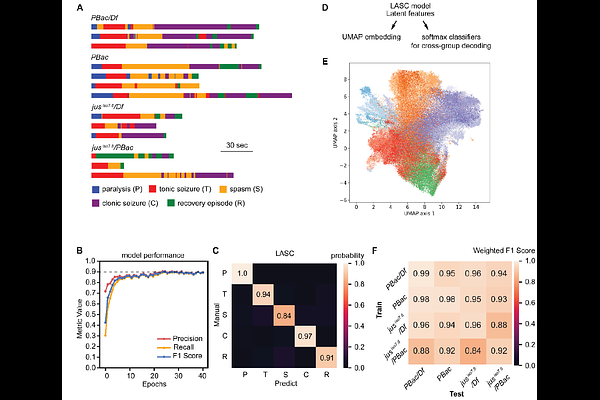Automated behavior classification of julius seizure mutants in Drosophila reveals stereotyped seizure stages with genotype specificity

Automated behavior classification of julius seizure mutants in Drosophila reveals stereotyped seizure stages with genotype specificity
Zhang, H.; Deitcher, D. L.; Lau, C. G.
AbstractBang-sensitive (BS) Drosophila mutants exhibit a stereotyped pattern of seizure behavior after mechanical disturbances. We previously identified mutations in the julius seizure (jus) gene, formerly CG14509, can induce BS seizures. However, the behavioral manifestations of the seizure phenotype of the various jus mutants have not been fully characterized. Here, we developed a machine learning pipeline featuring LASC (Long short-term memory and Attention mechanism for Sequence Classification) for automatic phenotyping of jus mutant videos. LASC achieves 90% classification accuracy in distinguishing five phases: paralysis (P), tonic seizure (T), spasm (S), clonic seizure (C), and recovery (R). Applying the trained LASC model to multiple jus lines showed they use a common repertoire of seizure stages and followed the general P[->]T[->]S[->]C[->]R progression, but each genotype exhibited unique patterns of stage duration and transition probabilities. Remarkably, stage usage patterns are distinct among the mutant genotypes. These findings establish that while all jus mutants adhere to stereotyped behavioral rules, each allele generates a distinct signature in stage usage. This work demonstrates how advanced behavioral quantification can reveal previously hidden relationships between gene mutation and complex motor outputs. More broadly, the complete pipeline presented here can pave the way for high-throughput, automated drug screening for epilepsy.